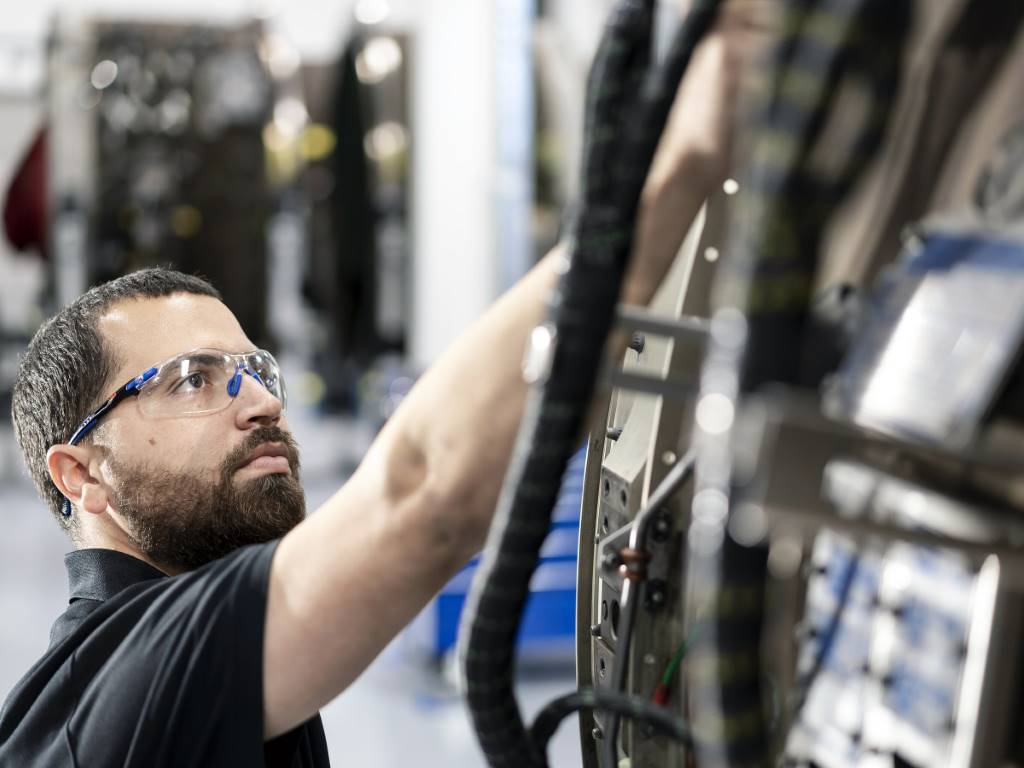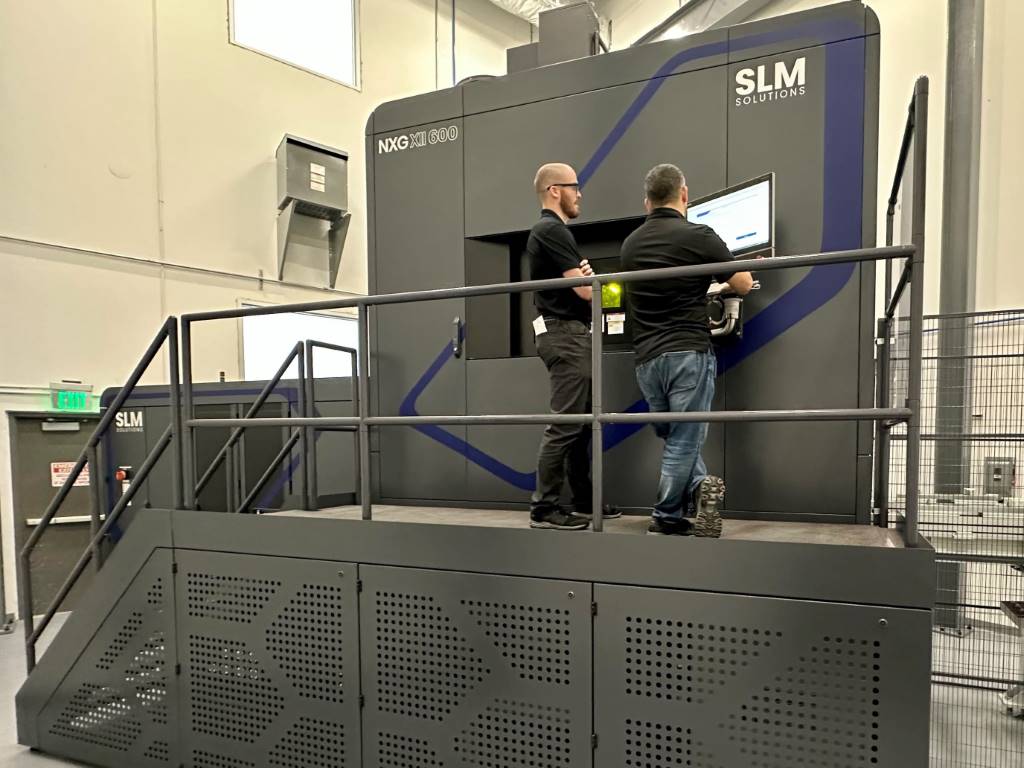Thermwood and Bell 3D print helicopter blade mould

A joint venture programme between Thermwood and Bell claims to have pushed the limits of 3D printing, resulting in what Thermwood believes is the largest 3D printed autoclave capable tool ever made.
A common limiting factor within aerospace development programs is expensive, long-lead time tooling. Bell, not being satisfied abiding by the industry norms, decided to reach out to Thermwood to help solve this challenge.
“Thermwood’s aggressive approach to pushing the boundaries and limitations of traditional 3D printing and machining is exactly what we were looking for,” said Glenn Isbell, vice-president of Rapid Prototyping and Manufacturing Innovation at Bell.
Shortly after initial conversations with Bell, the Thermwood team offered an opportunity of a partnership centring on the capabilities of its new 60mm melt core technology. The original challenge for quickly and affordably manufacturing large bond tooling seemed closer to reality than ever before.
Bell responded to this opportunity in kind by providing Thermwood a model of a closed cavity blade mould measuring approximately 20ft long, 14 inches wide, and 17 inches high.
The basic tooling requirements were as follows: Must to be printed in one continuous run for vacuum integrity; Surface finish must be 32 RMS or better; Tooling must be able to withstand 90psi at 360°F; Tight tolerances and features were also required to ensure proper mating of the two blade mould halves.
Utilizing its new 60mm melt core technology, Thermwood began to print the tool using TechmerPM’s 25% Carbon Fibre reinforced PESU (Polyethersulfone) in one continuous run. Working closely with Thermwood, Techmer has formulated this material specifically for LSAM additive printing.
The printable material has a glass transition temperature of over 400°F and can easily survive common aerospace component cure cycles of up to 360°F, at 90psi. The combination of Techmer's new materials and Thermwood’s printing technology, resulted in a print time of one tool half in just 3 hours 8 minutes and an ‘as printed’ weight of 542lbs.
Thermwood technicians claim the Techmer PESU material prints as easily as ABS, although at a much higher temperature, allowing quality autoclave-capable moulds to be made from the high temperature polymer.
This achievement was made possible by a new, larger melt core recently installed on Thermwood’s LSAM system at its Development/Demonstration Lab in Southern Indiana. The standard LSAM machine print head housing can be equipped with different capacity melt cores, each offering different minimum and maximum throughputs.
With Thermwood’s room temperature ‘Continuous Cooling’ print process, the cycle time for each layer is determined solely by how long it takes a particular printed polymer to cool to the proper temperature to accept the next layer.
Only by printing at the proper temperature can you achieve a totally fused, void-free printed structure that will maintain vacuum in an autoclave without a coating. The print head output determines how much material can be printed during the time it takes for the layer to cool. Bigger print heads mean larger parts, not necessarily faster layer to layer print time.
The new 60mm melt core has a measured maximum output of 480 to 570lbs per hour depending on the polymer being printed and can print over 100 feet of typical print bead (0.830” x 0.200”) per minute. This high print rate, even when processing high temperature material, allows the print bead to be oriented along the length of the tool. This is desirable for Bell, who manufactures large composite parts, because thermal expansion is significantly lower in that direction, minimizing expansion and contraction of the tool with temperature changes.
Another interesting feature of this tool is that the internal printed structure supports the mould without actually contacting or touching the back side of the mould cavity. This means air can flow freely under the entire formed part in the autoclave, making the part curing process easier and more consistent. The ability to incorporate a complex internal design, such as this, is another major advantage of using additive manufacturing for this type of tooling.
Thermwood’s LSAM Print 3D slicing software specifically supports programming of involved internal structures such as these.
Bell is continuing to investigate integrated technologies that support multiple manufacturing processes and tools. The LSAM is capable of supporting printing processes as well as trim and drill processes to meet aerospace specifications. Once printed, the team began to machine the bond tool half by utilising the other aspect of the LSAM system. The total machining time of the lower blade mould half was 40 hours.
James Cordell, manager of Manufacturing Innovation at Bell said: “This is a game changer. Being able to print, machine and utilize tooling in weeks in lieu of months will revolutionise the way we look at tooling going forward.”
The completed bond tool was able to maintain Bell’s vacuum standards required for autoclave processing right from the machine, without the need for a seal coating.
The Thermwood team will print the second half of the blade mould, with the intention of having Bell cure a full moulded blade within the final additively-manufactured bond tool, another first. Further testing will be completed by both Thermwood and Bell teams on PESU printed moulds, to continue innovating in this space.
“We are extremely excited about this extraordinary achievement. This raises additive manufacturing to a new level, opening opportunities only dreamed of a few years ago”, said Ken Susnjara, founder, chairman and CEO of Thermwood.
Thermwood believes recent LSAM technology advances such as Vertical Layer Printing and Changeable Melt Cores (coupled with polymers specially tailored for LSAM processing), are opening exciting new possibilities for additive production of even larger and more technically complex components.













